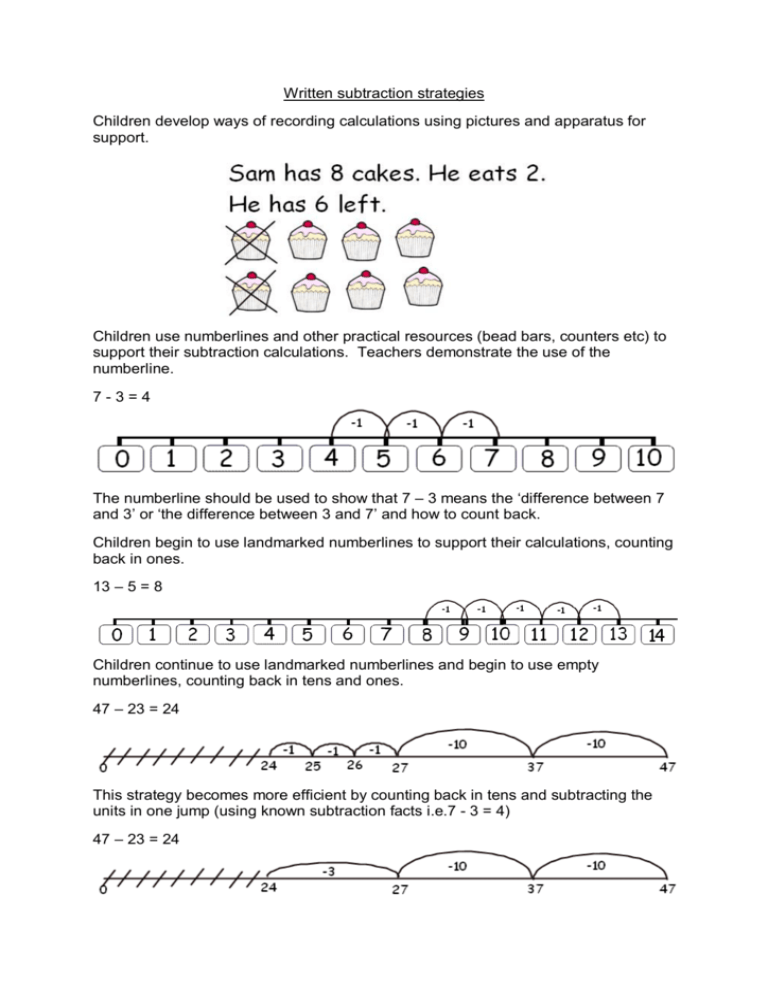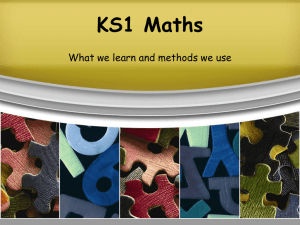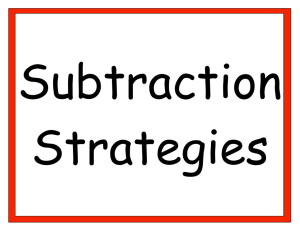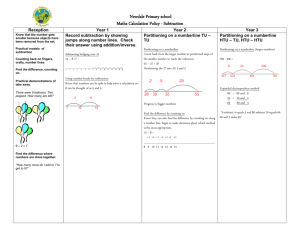Subtraction Methods - Blackhorse Primary School
advertisement

Written subtraction strategies Children develop ways of recording calculations using pictures and apparatus for support. Children use numberlines and other practical resources (bead bars, counters etc) to support their subtraction calculations. Teachers demonstrate the use of the numberline. 7-3=4 The numberline should be used to show that 7 – 3 means the ‘difference between 7 and 3’ or ‘the difference between 3 and 7’ and how to count back. Children begin to use landmarked numberlines to support their calculations, counting back in ones. 13 – 5 = 8 Children continue to use landmarked numberlines and begin to use empty numberlines, counting back in tens and ones. 47 – 23 = 24 This strategy becomes more efficient by counting back in tens and subtracting the units in one jump (using known subtraction facts i.e.7 - 3 = 4) 47 – 23 = 24 Subtracting the tens in one jump and the units in another jump. 47 – 23 = 24 Also bridging through ten 52 - 26 = 26 Difference Comparing two numbers or quantities and counting forward on the numberline. Numbers are close together on the numberline. What is the difference between 16 and 25? 120 – 98 = 22 Children should use jottings to support, record and explain their mental subtraction methods. When moving to vertical/column subtraction children should subtract the least significant digits first: - 9 5 4 4 7 4 3 0 3 (7 - 4) (90 - 50) 2 1 - 1 1 6 5 7 5 2 0 0 2 1 0 1 (7-5) (60 - 10) (200 - 100) Subtraction by decomposition Partitioning and decomposition should be demonstrated using arrow cards and base 10 materials. Using jottings and mental methods: 8 5 - 9 7 = - 8 5 3 0 0 0 + + + 9 7 2 = 32 1 6 5 = From this children will begin to exchange: 7 4 - 1 6 = - 7 4 0 0 + + 1 6 0 0 0 + + + 1 - 6 4 2 25 This is recorded as a written subtraction calculation as: 60 - 70 40 20 + + + 1 1 6 5 = 25 Children continue to use partitioning and decomposition on numbers which require exchange from tens and hundreds. 754 – 86 = 668 600 700 + 600 + - 140 50 80 60 + + + 1 4 6 8 = 668 This develops into a more efficient written method: 1 - 1 1 3 4 3 0 0 0 1 3 9 4 0 0 4 (13 – 9) (30 – 30) (100 – 0) Once children are confident using the expanded method they move onto the concise method of column subtraction with exchange: 1 3 4 3 0 1 5 - 6 2 3 1 4 6 8 1 3 9 4 2 3 1 1 1 7 8 9 Using similar methods children will subtract numbers with different numbers of digits subtract amounts of money know that the decimal points line up under each other subtract two or more decimal fractions When using written subtraction methods children should only move onto the next stage: when they are ready when they feel confident Children should be encouraged to approximate their answers before calculating and check their answers after calculation using an appropriate strategy. Children should be encouraged (and teachers should model) if a mental calculation would be more appropriate than using written methods.





